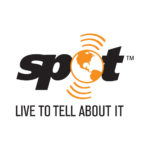Guidelines for Sea Kayaking in Canadian Waters
Sheltered* water: Minimum of one guide (assistant or leader)
Exposed water: Minimum of two guides (leader & assistant)
Leadership:
Guide/Client Ratio: A minimum of 1:4
(Exception: This ratio would be adjusted upwards as conditions dictate, e.g., exposed coastline, low water temp, etc.)
Guides: Minimum of two guides on each multi-day trip (leader & assistant)
(Exception: a group of experienced paddlers may require only one guide)
Equipment:
Per Boat: Coast Guard minimum
- Flotation (bulkheads or air bags)
- Bailing device (e.g. pump)
- Life vest/person
- Signaling device (e.g. whistle)
- Paddle / person
- Flashlight (night paddle)
Additional:
- Spray skirt (with grab loop)
- Deck rigging (preferably taut perimeter deck lines)
- End toggles
- Cold water gear (e.g. wet suit, poggies, neoprene booties), when conditions dictate
- Accessible water bottle
- Accessible food (e.g., candy bar)
Per Guide:
- Tow line (buoyant, with clip and quick release system)
- Self rescue method
- Knife (readily accessible)
- Matches/ lighter (waterproofed)
- Appropriate flares
- Spare paddle, compass & map/chart
Per Group:
- First aid kit -repair kit
- VHF radio or cellular phone (accessible and waterproof)
- Extra clothing bag (to deal with insufficient client clothing)
- Thermos ( means to heat water)
- SPOT GPS tracking units – On at all times when on the water.
Procedures:
Prior to day trip:
- Clarify expectations and obligations of the clients
- Determine relevant client medical conditions as well as possible,
- Determine the experience of the client and convey the demands and potential risks of the day trip
- Insure that the clients have the appropriate clothing & food (if not supplied) for the prevailing conditions
- Insure that equipment is suitable and serviceable
- Leave trip plan with responsible individual
En Route:
- Initial instruction/safety briefing including: risks associated with sea kayaking
- Function & fit of PFD’s (wearing mandatory)
- Function of all other equipment
- Procedures: signals, wet exits, rescues
- Basic paddling strokes
- The day’s itinerary
On-Going Assessment:
- Monitor weather and water conditions (adjust plans accordingly)
- Assess coastal exposure, landing options
Communication:
- Maintain contact with group members
- Note group members needs (tired, hungry, nervous, etc) and accommodate them
- Communicate effectively with other guides.
Camping:
- Low impact



